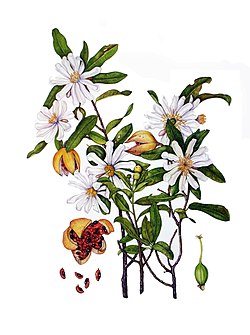| Xylotheca | |
|---|---|
 | |
| Xylotheca_kraussiana - painting by Barbara Pike, South African botanical painter | |
| Scientific classification | |
| Kingdom: | Plantae |
| Clade: | Tracheophytes |
| Clade: | Angiosperms |
| Clade: | Eudicots |
| Clade: | Rosids |
| Order: | Malpighiales |
| Family: | Achariaceae |
| Genus: | Xylotheca Hochst. |
| Synonyms [1] | |
| |
Xylotheca is a genus of flowering plants in the family Achariaceae. [2] The genus includes four species native to central and southern Africa and Madagascar. [1]